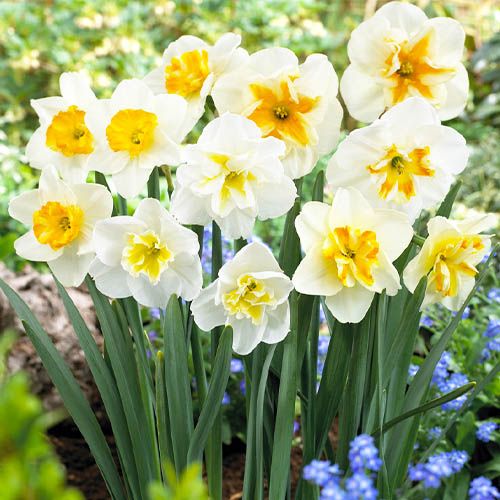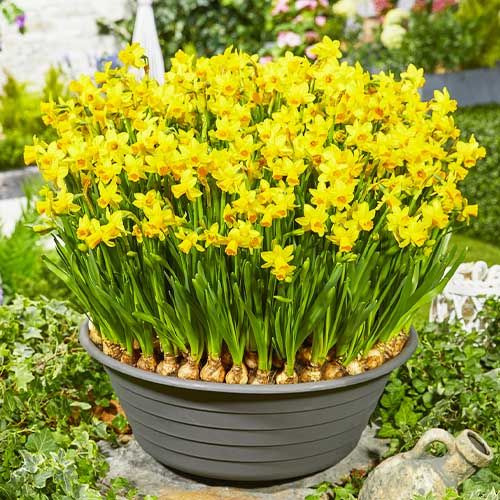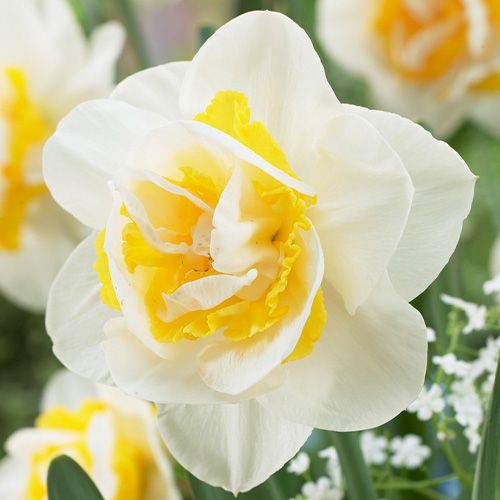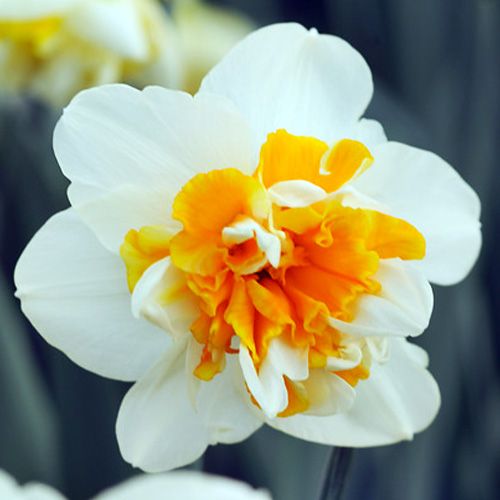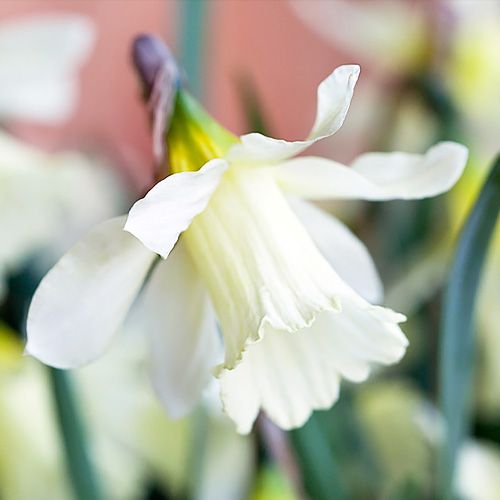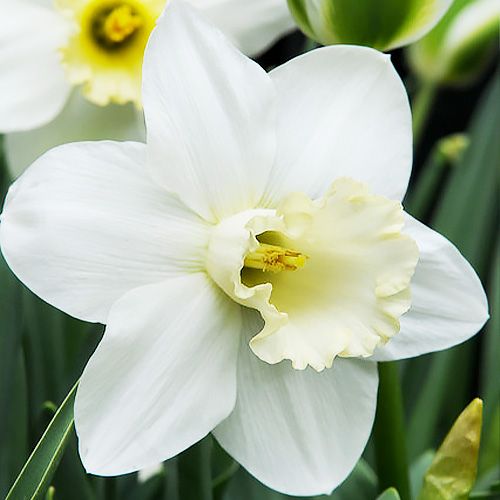
Daffodils and Narcissus
Daffodils and Narcissus Bulbs
Last Reviews
Daffodils and Narcissus Bulbs: A Symphony of Spring Colors
Spring heralds the ideal opportunity to infuse your garden with a burst of color, and what better way to evoke the essence of the season than with daffodils and narcissus bulbs? These delightful flowering plants require minimal effort to cultivate and maintain, offering a diverse range of hues and forms that are guaranteed to elevate the allure of your garden. Within this article, we will explore the various types of daffodils and narcissus bulbs, impart insights on their planting and care, and provide design ideas to help you envision their captivating presence within your home interior or garden space.
Types of Daffodils and Narcissus Bulbs
Daffodils and Narcissus are indeed among the most favored bulbous plants that grace gardens in the springtime. While these plants are often mistaken for one another, they are, in fact, distinct. Daffodils feature larger flowers and come in a diverse array of colors, offering a wide range of options for gardeners. On the other hand, Narcissus flowers are typically smaller and commonly found in yellow and white hues. Both plants are renowned for their ease of cultivation and low-maintenance requirements, making them particularly suitable for novice gardeners.
Traditional Daffodils
The quintessential daffodil bulbs, commonly referred to as traditional daffodils, boast a classic charm. They feature a trumpet-shaped center, typically adorned in yellow, encircled by six petals. These versatile daffodils are available in an array of colors, spanning vibrant shades of yellow, serene whites, and even captivating oranges. Standing at heights of up to 18 inches, they add vertical interest to any garden landscape. To maximize their visual impact, it is recommended to plant traditional daffodils in sizable clusters, creating a stunning and vibrant tapestry of color that enlivens the garden.
Double-flowered Daffodils
Among the popular daffodil bulb varieties, double-flowered daffodils reign supreme. These charming daffodils possess a distinctive allure, with blossoms that exhibit a full, ruffled appearance, reminiscent of miniature roses. Available in a delightful range of colors, including soft hues of pink and white, they add a touch of elegance to any garden setting. With a similar height potential of up to 18 inches, these daffodils create a striking visual impact. For maximum effect, consider planting double-flowered daffodils in generous clusters, allowing their abundance to make a bold statement and infuse your garden with their captivating presence.
Poeticus Narcissus
Enter the Poeticus Narcissus, a distinctive member among daffodil bulbs, also known as the Pheasants Eye. These bulbs give rise to exquisite white flowers, featuring a small yellow center and a captivating red-rimmed cup. Unfolding their petals as the season draws to a close, they occupy the final act in the symphony of blooming daffodils. Beyond their visual appeal, Poeticus Narcissus carries a delightful fragrance that entices pollinators. While they may not possess the flamboyance of traditional or double-flowered daffodils, their unique appearance and alluring scent make them an exceptional addition to any garden, adding an enchanting touch that sets them apart.
Planting and Growing Daffodils and Narcissus Bulbs
Daffodils and Narcissus are early spring flowering bulbs that add a splash of color to any garden. Here are the steps to plant and grow daffodils and narcissus bulbs:
Choosing the Right Location
When it comes to daffodils and narcissus bulbs, choosing the right location can be a crucial factor for their growth. These flowers thrive in well-drained soil that receives full sun to light shade. However, finding a spot that meets these requirements can be a challenge. As a gardener, you should be mindful of the intensity and duration of the sun in different locations throughout the day to ensure that your bulbs get enough sunlight. Its also important to note that these bulbs are relatively low maintenance and can withstand harsh weather conditions, making them suitable for a variety of outdoor spaces.
Preparing the Soil for Planting
Indeed, soil preparation plays a vital role in ensuring the long-term vitality of your bulbs. To set the stage for their optimal growth, it is crucial to eliminate any potential obstacles. Prior to planting, diligently remove any weeds or debris that could impede bulb development. Employing a garden fork or hoe can be an effective means of loosening the soil and extracting visible weeds. Once the soil is cleared, consider enriching its texture and fertility by incorporating compost or well-rotted manure. These organic materials serve to enhance soil moisture retention and supply vital nutrients to nourish your bulbs, fostering their overall health and robust growth.
Planting Techniques for Daffodils and Narcissus Bulbs
Planting daffodils and narcissus bulbs is an enjoyable and gratifying endeavor for any gardener. To ensure the flourishing growth of your bulbs, it is essential to adhere to some fundamental planting techniques.
- Begin by digging a hole that is approximately twice as deep as the height of the bulb. This provides ample space for the roots to establish and thrive.
- Place the bulbs in the hole with their pointed ends facing upward, ensuring they are properly oriented. Cover the bulbs with soil, gently firming it around them, and then thoroughly water the newly planted bulbs.
- It is advisable to carry out the planting process in the fall, approximately four to six weeks before the anticipated arrival of the first frost. By following these straightforward steps, you can relish the delightful beauty of daffodils and narcissus blooms in your garden, year after year.
Caring for Daffodils and Narcissus Bulbs
Daffodils and Narcissus bulbs are highly favored among gardeners due to their stunning flowers and minimal care requirements. These plants are renowned for their vibrant blossoms, typically in shades of bright yellow or white, which provide a delightful burst of color in the springtime. Their attractive flowers add charm and visual appeal to any garden setting. Moreover, these bulbs are celebrated for their ease of maintenance, making them a popular choice for garden enthusiasts of all levels of experience.
Here are some tips on how to care for your daffodils and narcissus bulbs:
Watering and Fertilizing
Caring for daffodils and narcissus bulbs is generally straightforward, but a few key considerations are worth noting. Although they do not demand excessive watering, regular watering is necessary during the growing season, particularly in arid climates. This ensures that the bulbs receive adequate moisture. Furthermore, it is crucial to provide them with balanced fertilizer in both the fall and spring seasons. This fertilization aids in fostering healthy growth and vibrant flower production. By adhering to these care practices, you can help maintain the robustness of your daffodils and narcissus bulbs, ensuring their ongoing health and the enduring beauty of their blossoms.
Managing Pests and Diseases
While daffodils and narcissus bulbs typically enjoy a respite from pests and diseases, snails and slugs can occasionally pose a threat. These unwelcome visitors may feast on the foliage and flowers, leading to notable damage. To counteract this, several preventative measures can be taken. One option is to encircle the base of the plant with copper tape, which acts as a deterrent to these slimy intruders. Alternatively, you can employ organic slug baits to discourage their presence. Additionally, it is essential to promptly remove any dead or diseased leaves from the plants, as this helps prevent the spread of disease and promotes overall plant health. By implementing these precautions, you can safeguard your daffodils and narcissus bulbs, ensuring their well-being and the unmarred beauty of their blooms.
Deadheading and Dividing
Once the flowers have bloomed and started to fade, it is indeed crucial to deadhead them. Removing the spent flowers prevents the plant from channeling energy into seed production, redirecting that energy towards storing nutrients for future growth. This practice helps ensure a robust flower production in the following year. Furthermore, dividing the bulbs every few years is advisable to prevent overcrowding and maintain healthy growth. To divide the bulbs, wait until the foliage has completely withered. Dig up the bulbs carefully and separate them into individual bulbs, ensuring each division has enough roots attached. Afterward, replant the bulbs at the same depth as they were originally planted, spacing them out evenly to allow room for their development. By incorporating these practices, deadheading and dividing, you can support the long-term vitality of your daffodils and narcissus bulbs, encouraging continuous blooming and maintaining their health in your garden.
Design Ideas with Daffodils and Narcissus Bulbs
Daffodils and narcissus bulbs are splendid choices for crafting a captivating spring display in your garden. Consider planting them in generous clusters or mixing them with other spring-blooming bulbs such as tulips and hyacinths. This combination of vibrant blooms will create a stunning tapestry of colors and textures, enhancing the visual impact of your garden.
Alternatively, you can utilize containers to showcase these bulbs and place them strategically around your homes entrance or on your patio. This allows you to bring their cheerful beauty up close, adding a touch of springtime delight to your outdoor living spaces. Whether you opt for expansive garden plantings or container arrangements, daffodils and narcissus bulbs are sure to infuse your surroundings with the enchanting essence of spring. Get creative and experiment with different planting styles and locations to design a personalized and breathtaking display that will bring joy and admiration throughout the season.
Where to Buy Daffodils and Narcissus Bulbs
Daffodils and narcissus bulbs have rightfully earned their status as beloved favorites among gardeners. They are readily available for purchase both online and at local garden centers, ensuring easy accessibility for enthusiasts. If youre looking to acquire a larger quantity, exploring wholesale options may lead to excellent deals and savings. The diversity within these bulb varieties offers an extensive range of colors and shapes, allowing you to find the perfect fit for your garden. Whether you prefer the radiant charm of bright yellow daffodils or the delicate elegance of white narcissus, there is a bulb to suit every preference. One of the remarkable aspects of these flowers is their ease of care, making them a low-maintenance addition to your outdoor space. With proper attention, daffodils and narcissus bulbs can bloom year after year, gracing your garden with their enduring beauty. Consider adding these delightful blooms to your garden and relish the splendor they bring to your outdoor haven.
Conclusion: Enchanting Spring Displays with Daffodils and Narcissus Bulbs
Daffodils and narcissus bulbs unquestionably bring a touch of beauty and charm to any garden or home interior. With their vivid colors and straightforward maintenance requirements, they present an ideal option for creating a captivating spring spectacle that will leave a lasting impression on your guests. Whether you seek to purchase daffodil bulbs locally or simply desire to infuse your garden with vibrant hues, daffodils and narcissus bulbs are the perfect choice to meet your needs.
Frequently asked questions about Spring Flowering Daffodils and Narcissus
When to Plant Daffodils and Narcissus?
What are daffodil bulbs and how are they planted?
Daffodil bulbs are the storage organs of the daffodil plant and are planted in autumn. They should be planted about 10-15 cm deep in well-drained soil, ideally in groups or rows to create a beautiful effect.
How to Plant and Care for Daffodils and Narcissus?
What types of daffodil bulbs do you offer?
We offer a wide range of daffodil varieties, including classic yellow daffodils, dwarf daffodils, fragrant daffodils and many more. Discover our selection in our online shop!
Where is the Best Place to Buy Daffodils and Narcissus Bulbs?
When is the best time to plant daffodil bulbs?
The ideal time to plant daffodil bulbs is in autumn, usually from September to November. This gives them enough time to prepare for spring.
Do you offer large quantities of daffodil bulbs for large projects?
Yes, we also offer large quantities of daffodil bulbs for landscaping and large projects. Contact us for more information and individual offers.
How long does it take for daffodil bulbs to flower after they have been planted?
Daffodils usually flower in spring, about 2-6 weeks after planting, depending on the variety and weather conditions.











